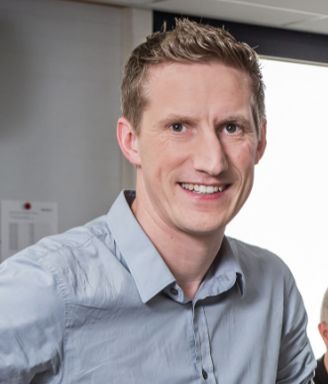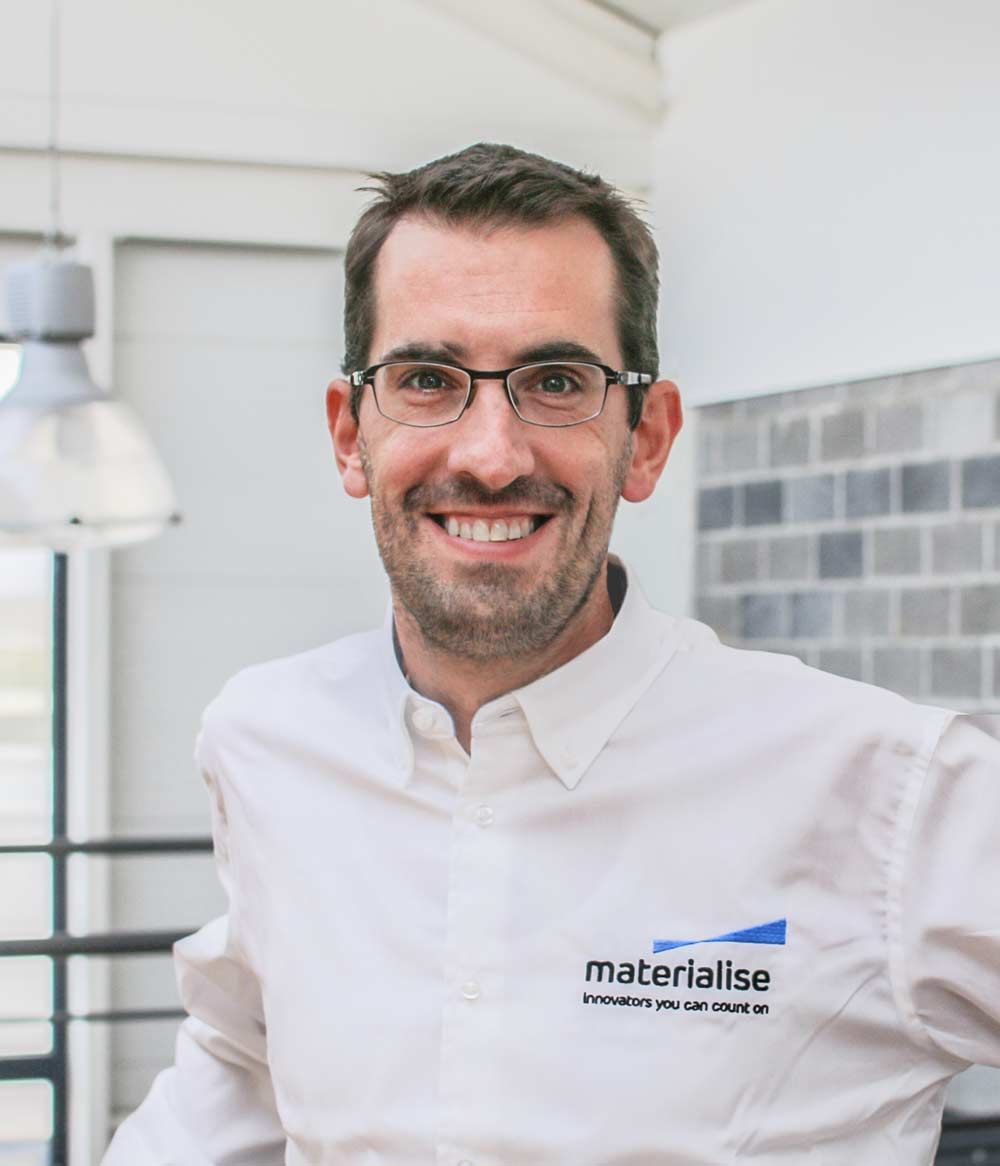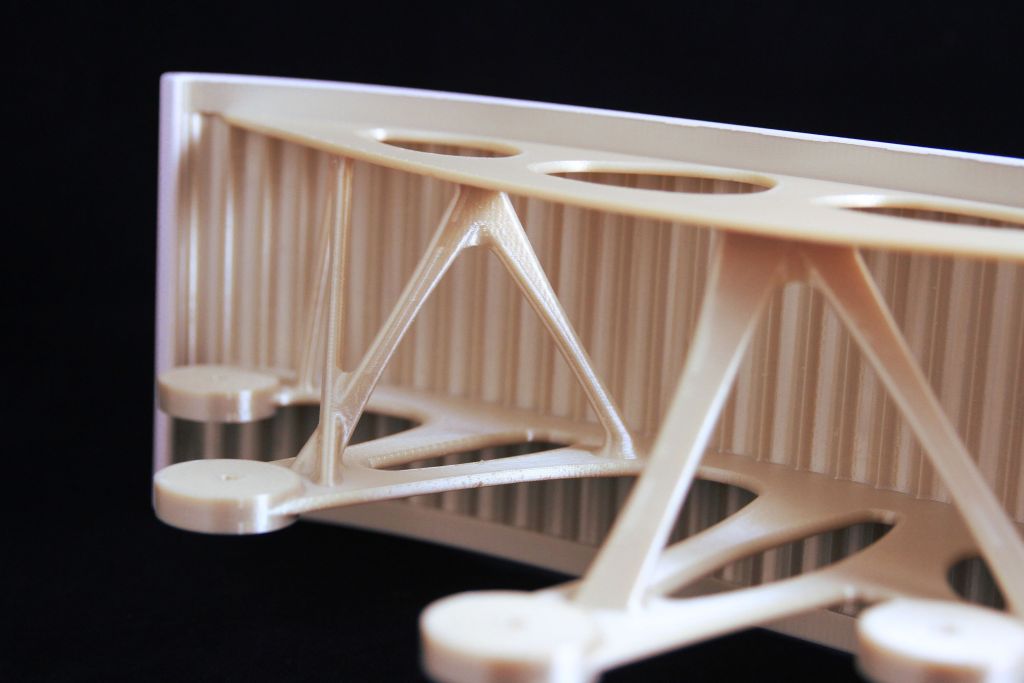Making 3D printing work for aerospace

Materialise’s market manager aerospace software, Lucas Hellemans (LH) and market manager manufacturing, Erik De Zeeuw (EDZ) reveal how the company is expanding its aerospace software and manufacturing activities to drive industry-wide adoption.
Materialise incorporates three decades of 3D printing experience into a range of software solutions and 3D printing services. Headquartered in Belgium, with branches worldwide, Materialise combines the largest group of software developers in the industry with one of the most complete 3D printing facilities in the world.
Q) Firstly, please bring me up to speed with your latest news.
EDZ: We’ve had a very successful year at Materialise. In May 2021 we became fully qualified to manufacture flight-ready parts using laser sintering technology for Airbus. This made us the first suppliers to be qualified to produce laser sintered parts under the Airbus Process Specification AIPS 03-07-022. Currently we are the only manufacturer to offer two Airbus-qualified 3D printing technologies.

Secondly, we announced our partnership with Proponent - a worldwide leading independent distributor of aircraft parts. This is huge news for Materialise as this will support the end-goal to raise the profile of 3D printing in the aerospace aftermarket supply chains.
LH: On the software level, Materialise licensed Siemens’ Parasolid software for integration with Materialise Magics - our industry-leading software for AM data and build preparation. This technology will provide an additional toolset on top of mesh functionality and enable users to easily review and edit parts with designers and engineers. In November, Materialise acquired Link3D, an additive workflow and digital manufacturing software company that supports customers in major manufacturing industries to scale and integrate their AM operations across complex supply chains and IT environments. This is an important step towards a unified, cloud-based AM software platform which will enable manufacturers to run and continuously improve the most efficient, repeatable, automated and controlled processes to mass-produce identical or customised products.
Q) What specific areas in your suite of software solutions are proving most popular with your aerospace customers?
LH: For software, our Magics is the benchmark. It’s a solution to prepare data and setup print jobs for all major AM technologies and for all major AM machine brands which makes it very versatile.

Most of our software customers are using powder bed metal printers. These machines have reached a certain level of maturity, but it’s still a sensitive technology. The right software tools enable users to use it in a more efficient way. Our modules for support generation are a go-to solution for them.
Support structures play a crucial role when 3D printing with metal powder. On the one hand they are important for a successful printing process and on the other hand they influence the cost per part via material consumption, printing time and especially post processing efforts.
Our simulation module for the metal 3D printing process is growing in popularity. It enables users to reduce the amount of test prints during the introduction phase of new products speeding up this process and simultaneously lowering the scrap rate.
Q) In general, what are the latest demands driving aerospace customer requirements for your software solutions and why?
LH: For most of our customers finding an appropriate software solution is mostly about quality and setting up a reliable AM production process. That is especially important for companies that are still relatively early in their AM journey. To set the process up in an economically sustainable way, it is essential to find the right process parameters on all levels and if necessary to integrate it into an existing production environment.
The two most important levels of quality control for those companies are: 1) overall production process of the parts, and 2) quality control of the printing process itself making sure all parts/properties are consistent. This is why the acquisition of Link3D was so important, as it’s not just about printing, it’s about a full digital manufacturing process qualification and control. This is what Link3D adds to Materialise's 3D printing software solutions.
Q) Any other specific demands you encounter with aerospace customers?
EDZ: Of course, not all companies are investing in in-house AM capabilities. Some of them are still in an exploration phase, others have already decided to rely on external partners, and some are still sceptical about the technology.
They are all looking for a broad set of services: From application spotting and part design for AM to reliable manufacturing. Reliability is a key aspect in the aerospace industry, not only concerning the quality but also regarding demand management and delivery in time.
Q) What is necessary to support the aerospace industry in adopting AM?
EDZ: Despite a lot of hype in recent years, establishing AM has been a slow revolution. Now we are past the stage of it only being a rapid prototyping technology. Most public attention is given to what we call ‘superhero’ applications: flying parts designed for AM typically in metal, with complex designs, to reduce weight, combine components and improve functionality. They offer great benefits, but require huge amounts of resources to be pulled off.

But there are also the ‘unsung heroes’. These are low criticality and non-critical parts that are all over the plane especially in the cabin interior. They offer companies a good way to get familiar with AM. With low-criticality applications it’s not about AM design benefits, but rather about supply chain benefits. AM is a tool-less manufacturing method and doesn’t require investments in tooling or keeping them in stock for later use. Combined with a digital inventory, companies can shorten their order process and supply chain. Without the hurdle of a minimum order quantity, they can stock exactly the number of parts they want and optimise their inventory. That is why we partnered with Proponent: to make AM more accessible to the aerospace industry.
Q) Do you have any involvement with industry and Governmental legislative bodies?
EDZ: Yes. Materialise is linked to BCAA (Belgian civil aviation authority). There are only nine EASA Part 21.G-certified organisations allowed to produce flying parts in Belgium and Materialise was the first to do so with AM. So, Materialise had to develop the approach on how to qualify on the production side.
We are also involved with EASA who, together with the FAA, are setting the guidelines on how companies can adopt AM for flying components. Materialise contributes to EASA’s working group on AM composed of industry members, machine manufacturers and service providers that work to expand the guidance for the industry year on year.
Q) Have your long-standing partnerships brought benefits, particularly as trusted relationships can lead to a better way forward for all?
EDZ: Absolutely, a good example is Airbus. We are producing over 26,000 ready-to-fly parts for the Airbus A350 each year and are working with Airbus on qualifying AM technologies. Such partnerships are necessary to make AM ready for industrial applications in all kinds of sectors.
LH: We are working with many AM machines vendors to create specific build processors for their machines. Dedicated software solutions like these are important to deliver maximum control over the printing process, provide connectivity and technological neutrality to the users.
Q) Where to next for your company?
LH: From a software point of view, we are working hard on our cloud-based AM software platform and are looking forward to partner and collaborate with additional AM machine vendors.
EDZ: Manufacturing-wise, we are looking forward to further expand our aerospace activities through additional partnerships and technological advancements that will lower the threshold in adapting AM for the industry.












